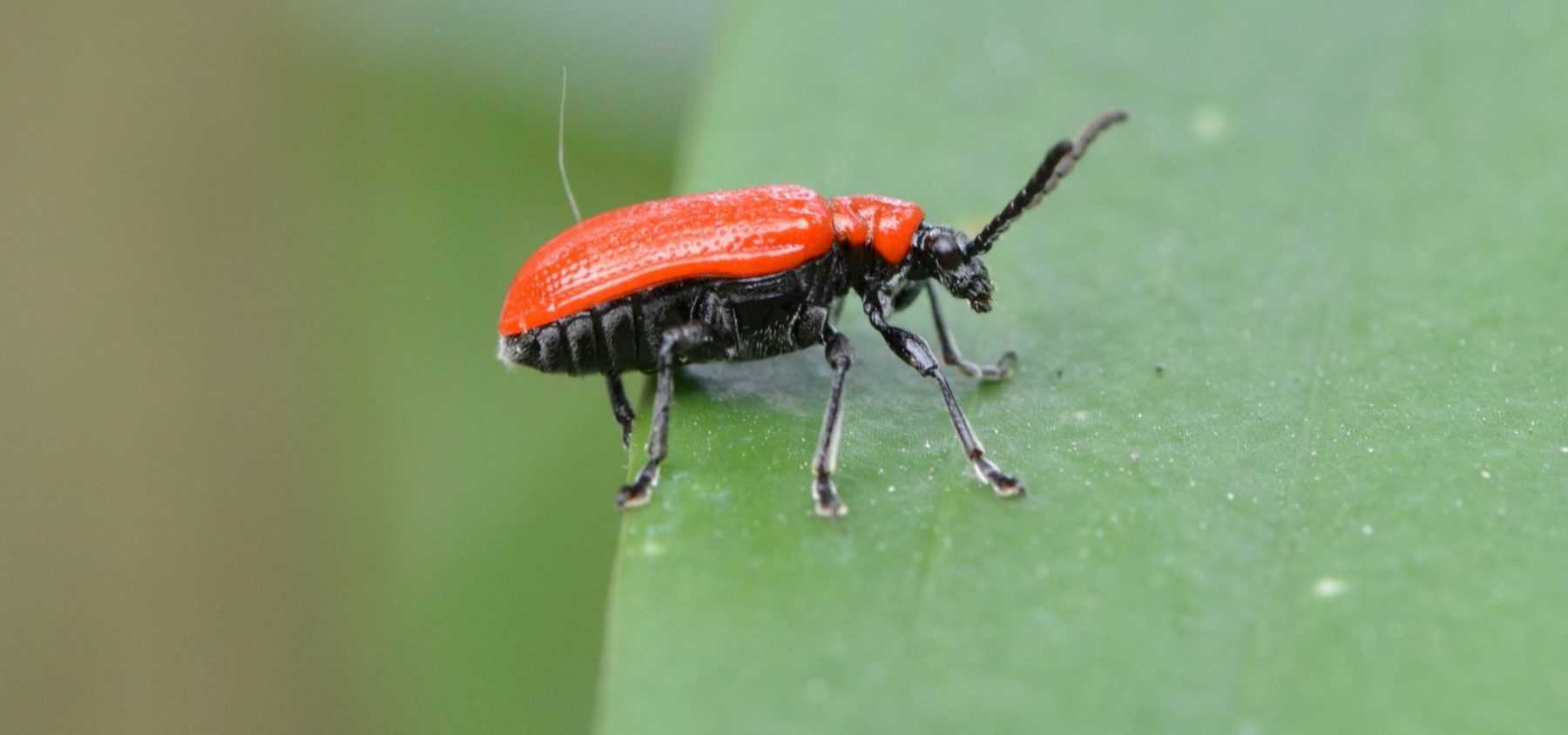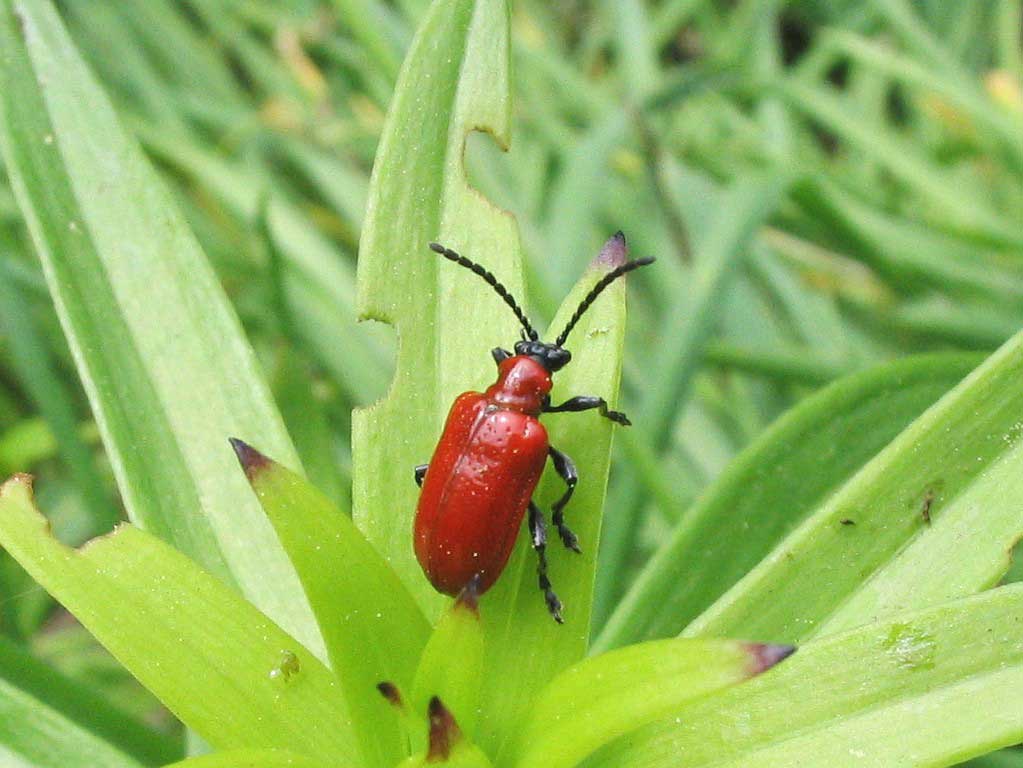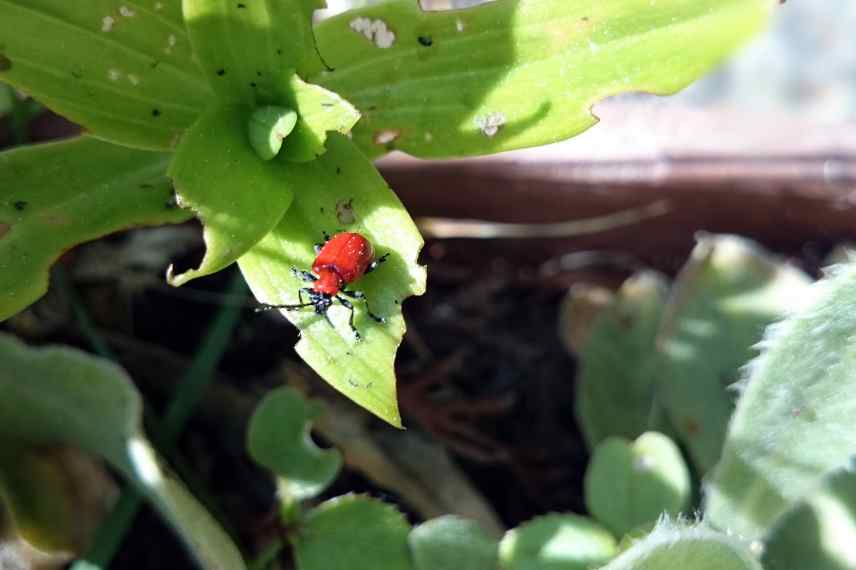
Lily beetle: treating infestations
Our tips for identifying this pest insect and protecting your lilies
Contents
The Lily Beetle (Lilioceris lilii) is a parasitic insect of lilies of Asian origin, which appears as a small red larva in its juvenile form. As an adult, it is a small beetle distinguished by its colour as well as the damage it causes to lilies. We explain how to recognise it and how to get rid of this insect using natural techniques, to protect your lilies!
How to recognise the lily beetle?
The presence of lily beetles can be noted in two ways:
- By observing them: it is a beautiful little bright red beetle, about 1 cm long, with black legs, abdomen, and long antennae. They are often observed on the underside of leaves from March to October. The bright orange eggs of the lily beetle can also be seen on the underside of leaves: they are aligned in small groups along the veins. They give rise to black and orange larvae, which cover themselves in excrement to hide and protect themselves from the heat.
- By their effects: their larvae eat the roots of lilies, and the adults devour the leaves, creating holes, as well as the flowers and flower buds. The plants wither and eventually die if the attack is not controlled.
Unfortunately, all varieties can be affected, but Lilium candidum is among the most vulnerable, while Martagon lilies are slightly less attacked. The lily beetle also attacks, to a lesser extent, alliums, fritillaries, and the giant lily Cardiocrinum.
Lily beetles reproduce very quickly. A female can lay up to 400 eggs per season. Therefore, as soon as you spot the first lily beetles, it is important to act immediately to control their population.

What are the natural treatments against the lily beetle?
The most effective method is manual collection and destruction of adult beetles. To curb the infestation, it’s ideal to check daily, early in the morning, for several weeks. Be careful, as when attempting to collect them, lily beetles tend to drop to the ground and play dead to become less visible… Collecting eggs and larvae is also possible. Remember to turn over the leaves to search for the orange eggs on their undersides.
You can also collect and burn leaves affected by the larvae.
Some apply coffee grounds at the base of attacked stems or spray a solution based on pyrethrum or neem oil. It is also possible to spray a tansy infusion, whose smell repels lily beetles. However, to date, no treatment has proven completely effective. We therefore recommend prioritising manual collection.

- Subscribe!
- Contents

































